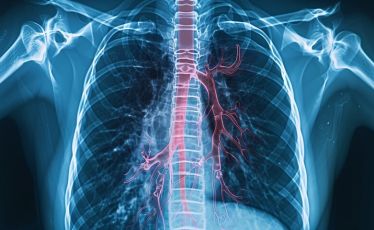+62 859-3135-3197
Installing a Heart Stent, Here are the Benefits and Risks!

Many people think that installation of stents can solve various heart diseases. Whereas, stents can only treat coronary heart disease, which is a disease that occurs due to blood flow in the heart's blood vessels being blocked by a buildup of fat.
Installation stent Heart disease is the method chosen by many patients with coronary heart disease because it has been proven to increase the patient's life expectancy. However, if you or your relatives plan to use this treatment method, it would be a good idea to know various things about the installation first, before making a decision.
What is Stent Installation and Its Benefits
When someone is diagnosed with coronary heart disease, the doctor will provide treatment by prescribing medication and also asking the patient to change his lifestyle, including:
Managing stress.
Exercise regularly.
Maintain weight.
Avoid cigarettes and liquor.
Avoid fatty foods
During the treatment process, the doctor will continue to monitor the progress of the disease. If the patient's condition remains stable, then this method may be continued. However, if after the patient undergoes treatment the condition does not improve, then a catheterization and installation procedure is carried out stent when there is significant narrowing of the heart's blood vessels.
Installation stent is a medical procedure by placing a stent on blocked blood vessels so that blood flow returns smoothly. Stent What is used is a tool resembling a small wire tube made of stainless metal.
Installation stent It can be done in a planned manner, that is, according to the time determined by the doctor, or suddenly. For example, in patients who experience a severe heart attack or ST-segment elevation myocardial infarction (STEMI). In this condition, the blockage occurs completely and can cause damage to the heart muscle, so installation action must be taken immediately
Installation stents at the right time will further increase the life expectancy of coronary heart disease patients. However, this is still influenced by the patient's care and lifestyle after installation.
Stent Installation Procedure
The following is the procedure performed in the installation stent, that is:
The patient remains conscious and is given local anesthesia.
With the help of X-ray imaging to help direct, the doctor begins to install a heart catheter which is inserted through the groin or wrist.
After that, a contrast agent will be injected to clarify the image of the blood vessels so that you can see the exact location of the blocked blood vessels.
If a blocked/narrowed blood vessel has been found, a catheter with a balloon tip and a catheter will be inserted which is still deflated and directed to the blocked blood vessel.
Once the balloon is directly in the blocked area, it will inflate to open its stent and place it in blocked blood vessels.
If stent Once installed, the balloon will be deflated again and the catheter will be pulled back out of the blood vessel.
Risks of Stent Placement
Of course, various medical procedures have risks, including installation stent This. Some risks that may occur are:
Blood clotting.
Post-operative infection.
Drug allergies.
Heart attack
Narrowing of the blood vessels again.
However, if the installation stent is done successfully, it will really help coronary heart disease patients overcome their disease. To minimize the risk, it is highly recommended for patients to do the following things:
Inform the doctor about all your medical history and any medications you are taking before taking action.
Always follow all recommendations from the doctor who treats coronary heart disease.
Make sure to install a stent in an experienced hospital.
Premier Hospital Surabaya own Heart & Vascular Center, which is an integrated heart service with sophisticated equipment to assist with an accurate diagnosis process by our experienced doctors. Through this diagnosis, our doctor will determine the most appropriate further treatment according to the patient's condition, including installation of a stent if necessary.
Contact Us
For information and to make appointment
| Loading data... |
|---|

















